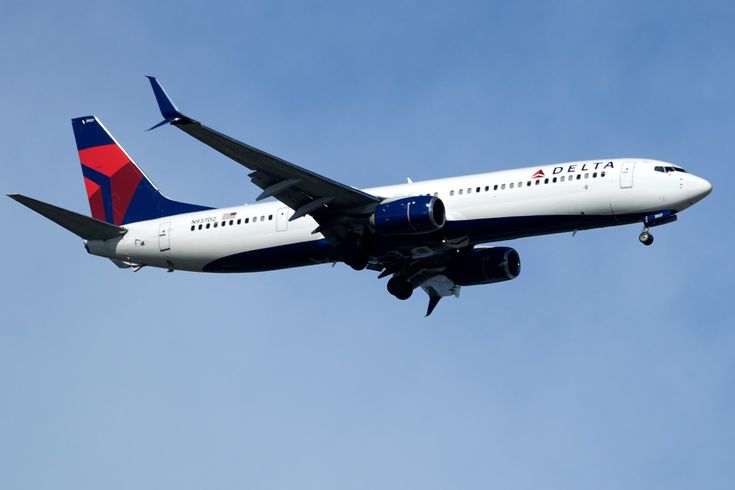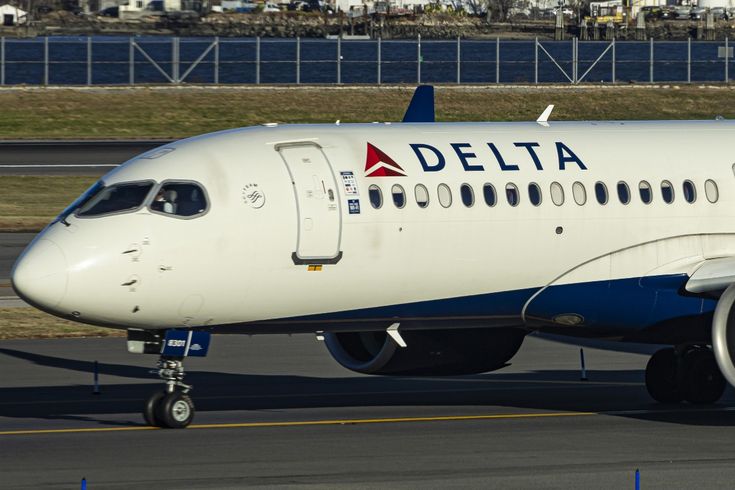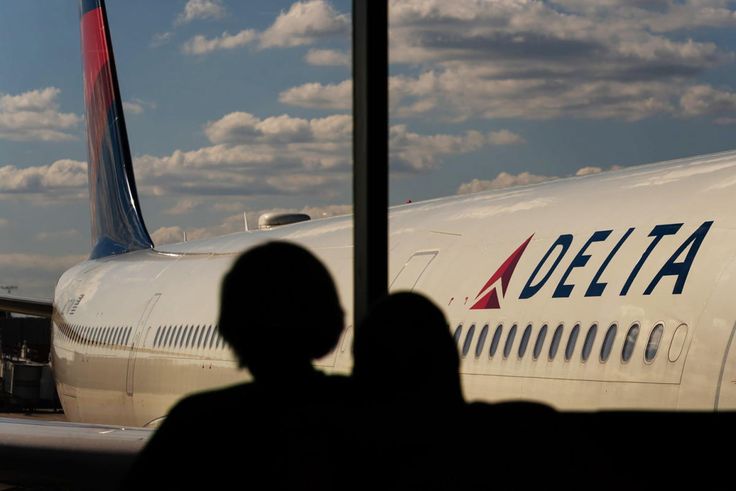When the cabin lights aboard Flight 2311 dimmed into cruising mode and the hum of the engines settled into steady monotony, few on board expected what would come next. What began as a routine late-afternoon flight from Los Angeles International Airport (LAX) to Salt Lake City International Airport (SLC) under the wing of Delta Air Lines would become an in-flight drama that left passengers rattled, crew members vigilant, and aviation watchers asking: what triggered the panic?
The Flight and Its Route
Flight 2311 is a familiar daily departure for Delta, routinely departing LAX’s Terminal 3 at around 17:00 PDT, bound for Salt Lake City, with an approximate flight time of 1 h 50 m. This segment between Los Angeles and Salt Lake City, though modest in distance, serves business travellers, families, and connecting passengers alike. On the day in question, the aircraft—an Airbus A321neo operated by Delta—taxied out on schedule, boarding wrapped up without incident, and the doors closed as dusk began to settle over the California coastline.
A Calm Departure, Then an Upset
As the jet climbed out of LAX and craned its way toward cruising altitude, the cabin seemed placid. Conversation was light, overhead bins were closed, and the flight attendants prepared their service carts. But about halfway to the destination, something changed.
One passenger reported hearing a muffled shout near the mid-cabin, followed by rapid footsteps in the aisles. Others described unexpected turbulence and a momentary jolt that rattled the cabin—though the aircraft was still in straight and level flight. Whether the turbulence triggered the panic or the panic triggered the turbulence is unclear; what is clear is that a wave of alarm swept through the cabin.
Passengers looked around, checking phones. Many unbuckled, some stood in the aisles. A few pressed call buttons in succession. The cabin lights flickered briefly. Crew members hurried from seat to seat. Within minutes, the pilot’s voice came over the intercom: “Ladies and gentlemen, please remain calm. We are returning to LAX for precautionary reasons.”
Why the Return?
An emergency turnback is not taken lightly. Airline protocols require that the flight crew determine whether a situation poses a risk to safety—mechanical, medical, or otherwise—and if so, divert or return. In this case, the airline later cited a “cabin-safety related incident” requiring evaluation by ground crews. (Delta Air Lines has not publicly disclosed full details of the incident.)
Observers with access to flight-tracking data confirm the aircraft began a U-turn at about 18:15 PDT, reversing course and landing back at LAX roughly 45 minutes later. The earlier anticipation of a routine arrival at SLC around 19:52 MDT did not come to pass.
In the Cabin: Panic and Response
From passenger accounts, the mood shifted quickly. One seat-mate recalled overhearing someone whisper anxiously: “Is the door open? Why are we shaking?” The lead flight attendant addressed the cabin as the crew reacted quickly:
“Please remain seated with your seatbelt fastened. We are returning to Los Angeles as a precaution. This is just a safety measure. We will keep you updated.”
That announcement helped quell some of the tension, but not entirely. A handful of younger passengers grabbed their phones, recording the moment. Others tried to calm children, while still others simply stared blankly ahead. The cabin service cart was halted mid-aisle, and the in-flight snack service was cancelled.
Behind the scenes, the cockpit crew coordinated with Air Traffic Control (ATC) and the airline’s operations centre to execute the return safely. Ground crews were alerted to prepare for inspection. Medical personnel stood by in case of passenger distress.
Expert Take: What Could Cause Such a Turnback?
While the airline has not released a formal investigation report, aviation experts point to several plausible causes:
Mechanical or technical issue: Even subtle problems—like a sensor fault, pressurisation irregularity, or warning light—can prompt an immediate return. Early turbulence might have flagged an irregularity.
Cabin environment concern: Smoke, smell of burning insulation, pressurisation hiss, or even severe turbulence can trigger crew action. A sudden hiss or unfamiliar odor could spark panic in the cabin and a precautionary landing.
Medical emergency: A passenger or crew member requiring urgent attention could necessitate the return. But in this case, no immediate reports of a medical event surfaced publicly.
Passenger behaviour: A panic outbreak itself—especially if misperceived by crew as a broader safety event—can lead to decision to land. For example: multiple call-buttons triggered simultaneously, or reports of someone moving erratically in the cabin.
Whatever the root cause, the turnaround timeline suggests the crew deemed the situation non-catastrophic (no immediate fire or engine failure)—yet sufficiently unsettled to justify returning rather than continuing.
Why It Matters: Trust, Safety, and Brand Impact
For Delta Air Lines, the incident carries multiple implications:
Safety perception: Even if the event posed no actual aerodynamic risk, the perception among the flying public is critical. A forced return raises questions: “Is the aircraft safe?” “Did something go wrong?” Transparent communication matters.
Operational cost: Diverting a flight, rescheduling passengers, and conducting inspections incur costs—for the airline, but also for passengers faced with delays or missed connections.
Customer experience: Panicked passengers may require re-accommodation, compensation, or at minimum courteous explanation. How Delta responds in the hours following the landing will shape passenger loyalty.
Media & social effect: With crowded cabins and ubiquitous smartphones, in-flight incidents can trend on social media—impacting brand reputation more swiftly than ever.
Lessons for Passengers: What You Can Do
This incident serves as a reminder for travellers of the following:
1. Keep your seatbelt fastened when seated. Unexpected turbulence or manoeuvres can occur even when the sign is off.
2. Stay alert for announcements. The flight crew is your first and best source of information.
3. Avoid jumping to worst-case conclusions. A turnaround is serious, but it does not always mean disaster—precautionary landings happen.
4. Maintain respectful cabin behavior. Panic can spread through behaviour, noise, and disruptions—so staying calm helps the crew.
5. Document responsibly. Taking a photo or video is fine, but don’t block aisles or interfere with crew tasks.
The Landing Back at LAX
As the Airbus vectorised back toward Los Angeles, cabin service staff prepared the cabin for landing. The pilot announced the descent: “We’re returning now to Los Angeles International Airport. Please ensure your seatbacks and tray-tables are in the upright position, and your seatbelt is fastened.” The landing was smooth—and on the ground, ground crews met the aircraft. Passengers were instructed to remain seated until all inspections were complete, and crew members began distributing vouchers for meals and accommodation where needed.
After deboarding, Delta representatives offered assistance to rebook connecting flights, and the airline confirmed that the aircraft would be subject to a full inspection before returning to service. Official comment by the airline noted: “We apologise to our customers for the disruption and are working to determine the cause of the cabin-safety concern that prompted our decision to return.”
Mid-Term Impact: What Might Follow
Moving forward, Delta and regulators face several areas of inquiry:
Incident investigation: The airline will log the event in its internal safety and quality monitoring systems. If a mechanical fault is found, the manufacturer and regulatory authorities may examine design or maintenance implications.
Training review: Cabin crew and cockpit crew reactions, communications, and passenger management will be reviewed to ensure that panic is managed and communicated effectively.
Passenger compensation: According to U.S. regulations and Delta’s own policy, passengers may be eligible for meal vouchers, accommodations, or even refunds—depending on delay length and airline discretion.
Public messaging: Delta may issue a statement once the investigation is complete to reassure customers and restore confidence in the A321neo fleet and the LAX-SLC corridor.
Bigger Picture: Airline Safety and Visibility
While airlines routinely respond to in-flight anomalies, the aviation-aware public has grown more sensitive to even minor incidents. In that context:
Aircraft like the A321neo may be subject to heightened scrutiny—though this type has otherwise enjoyed a strong service record.
Routes like LAX to SLC, although short, connect busy airline hubs and rely on tight scheduling—so disruptions ripple.
Crew decisions to return to origin airports, especially when the event is passenger-panic-driven rather than mechanical, highlight how important cabin-crew vigilance is in overall safety management.
Final Thoughts: A Scare, Not a Crisis
For the travellers of Delta Flight 2311, what unfolded was undoubtedly frightening—an unexpected turnback, uncertainty, and the disruptive inconvenience of a landing they hadn’t anticipated. Yet the outcome was favourable: the aircraft landed safely, no serious injury has been reported, and the airline is investigating.
Nevertheless, the episode underscores how quickly normalcy can shift in the air, and how vital communication, preparedness, and calm are when that happens. Airlines may train for engine failures and cabin depressurisation—but as this incident shows, sometimes it’s the human element—the collective response of passengers and crew—that determines whether a scare remains just that, a scare.
Timeline Summary
5:05 p.m. Delta Flight 2311 departs LAX bound for Salt Lake City
5:35 p.m. Light turbulence reported; some passengers anxious
5:45 p.m. Panic spreads; flight attendants address cabin
5:50 p.m. Captain decides to return to LAX as precaution
6:15 p.m. Aircraft descends toward Los Angeles
6:35 p.m. Safe landing at LAX; paramedics on standby
7:30 p.m. Delta issues statement; passengers rebooked
Related News: Read More





